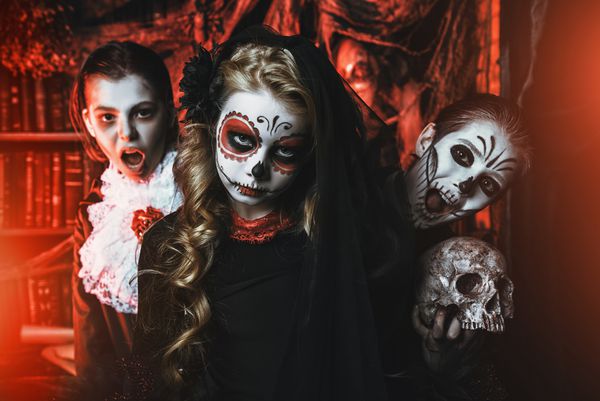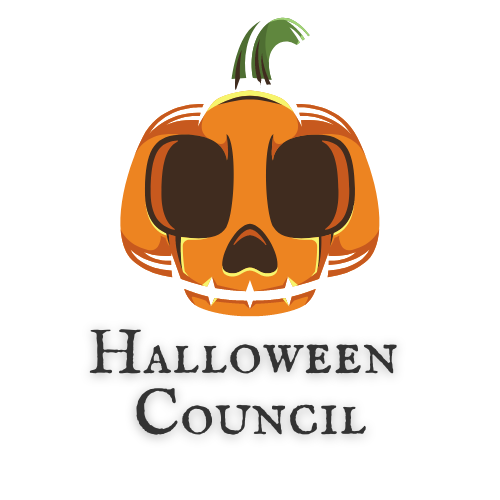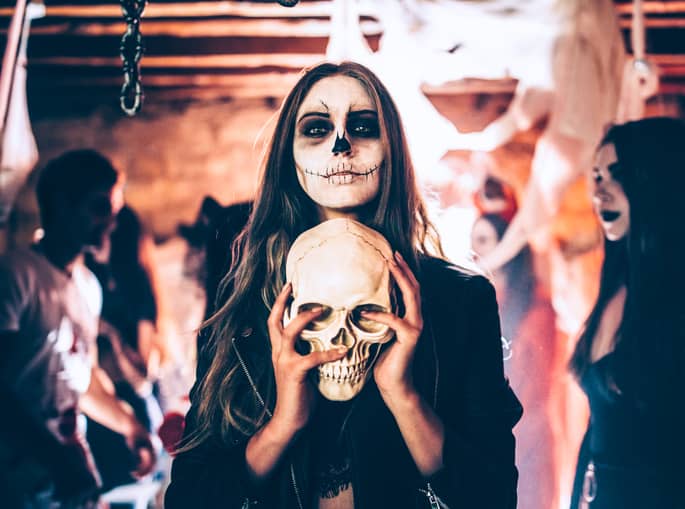I was arranging my bookshelf the other day, and I noticed something curious. My Halloween section has its own distinct personality. The spooky spines of classic horror sit beside collections of folktales, and it got me thinking. Why do these stories, from so many different eras, all speak to us so powerfully every October? This exploration of Halloween’s literary history uncovers how ancient folklore and classic literature shaped the holiday we know today, revealing the timeless human need to confront fear through story. I want to trace that journey with you, from ancient campfires to the paperback on your nightstand. My fascination always leads me back to the beginning, to the Celts and their festival of Samhain. This was not just a harvest celebration; it was something much more profound. Imagine standing on a windswept hill in ancient Ireland, believing with absolute certainty that on this one night, the veil between our world and the next was tissue-paper thin. The stories they told were not for simple entertainment. They were survival guides, cultural warnings, and attempts to explain a frightening world. Tales of fairies stealing children or spirits seeking warmth were not just creepy—they served a purpose. They kept people cautious and close to home on a dangerous night. It is humbling to realize that our tradition of scary stories is rooted in something so primal and practical.
When Christianity spread across these lands, something remarkable happened. The church, rather than erasing the old ways, often wove them into new traditions. Samhain became All Hallows’ Eve. I find this fusion incredibly beautiful. The pagan understanding of the spirit world merged with Christian themes of saints and souls, creating a whole new layer for storytelling. The ancient folktales did not disappear; they simply put on a new costume. This is where the DNA of modern Halloween literature was truly formed, in this messy, human process of cultural blending. If the ancient world provided the seeds, then the 19th century was the greenhouse where Halloween literature truly blossomed. This is my favorite period to explore. I have a soft spot for Victorian writers, who approached the supernatural with such a delightful blend of terror and sophistication. Washington Irving’s “The Legend of Sleepy Hollow” is a perfect example. Is there a more iconic Halloween image than the Headless Horseman hurling his pumpkin head? I remember reading it for the first time as a teenager, struck by how it was both genuinely frightening and wonderfully satirical. Irving did not just tell a ghost story; he crafted a piece of American folklore that feels like it has always existed.

And then we have the great ghost story writers like Charles Dickens and M.R. James. It is funny, is it not, that we now associate ghost stories with Halloween, while the Victorians often told them at Christmas? The point is, they elevated the form. They showed that a story about a specter could also be a story about human guilt, social injustice, or lost love. They taught us that the most potent fears are not the monsters under the bed, but the regrets and secrets we keep locked in our own hearts. Reading their work, I am always reminded that the best Halloween literature is about more than just a quick scare. The 20th century took these foundations and exploded them into a thousand fascinating directions. I can not talk about modern Halloween literature without mentioning Ray Bradbury. His novel The Halloween Tree is, for me, a love letter to the holiday itself. It is a book that understands the soul of Halloween, tracing its history with a sense of wonder and poetry that is increasingly rare. Bradbury proved that a Halloween story could be an adventure, a history lesson, and a philosophical exploration all at once. Then came the masters of modern horror, like Shirley Jackson and Stephen King. They pulled the supernatural out of haunted castles and dropped it squarely into suburban living rooms.
They understood that the true horror of Halloween is not just the monster from the folktale, but the monster that lives next door, or worse, the monster inside ourselves. This, I think, is the natural evolution of the ancient folktale. The warning has shifted from staying away from the fairy mound to looking closely at your neighbor, and then looking even closer at your own reflection. What continues to amaze me is the fluidity of the Halloween folktale. Consider the story of Stingy Jack, the origin of the jack-o-lantern. I have heard a dozen different versions. In one, Jack is clever; in another, he is an outright villain. The story molds itself to the teller, which is the mark of a truly resilient narrative. These stories survive because they are not set in stone; they are alive, changing with each telling to reflect our current anxieties and values. So, why does this tradition endure? I think it is because these stories give us a safe container for our fears. We can explore the concept of death, wrestle with the idea of evil, and flirt with the unknown, all from the safety of our favorite reading chair. When I read a classic Halloween story or discover a new piece of folklore, I feel connected. I am connected to the author, yes, but also to that Celtic storyteller huddled around a fire, and to every person since who has needed to make sense of the darkness by giving it a narrative. We are not just reading stories; we are continuing a sacred, ancient practice. And that is a tradition worth passing on.
References
Library of Congress. (2021). The origins of Halloween traditions. Headlines & Heroes Blog. https://blogs.loc.gov/headlinesandheroes/2021/10/the-origins-of-halloween-traditions/
New York Public Library. (2018). A brief history of Halloween. NYPL Blog. https://www.nypl.org/blog/2018/10/26/brief-history-halloween
Hudson Valley Historical Society. (2018). Washington Irving and the Gothic literature movement. https://hudsonvalley.org/article/washington-irving-and-the-gothic-literature-movement/
HISTORY. (2019). Halloween: Origins and traditions. https://www.history.com/topics/halloween

